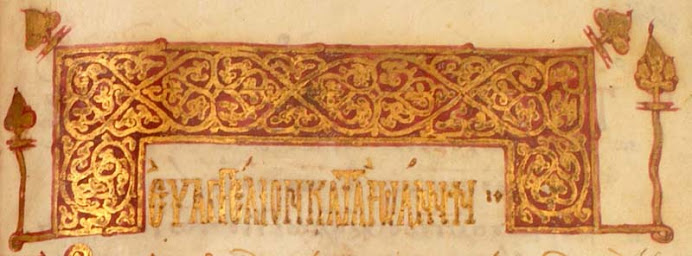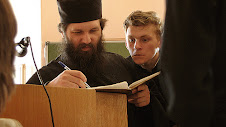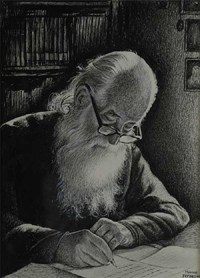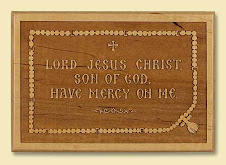
I see that a short study of the life and work of the great and influential iconographer, Leonid Alexandrovich Ouspensky (1902-1987), will be released this spring. He is perhaps best known in the English-speaking world for such books as The Meaning of Icons (co-authored with his close friend Vladimir Lossky) and the indispensable two-volume work Theology of the Icon. He was also a friend of Photis Kontoglou, who was in many ways his Greek counterpart.
Leonid Alexandrovich's widow, Lydia Alexandrovna, writes the following about his Church activities in Paris:
A selection of his panel icons can be viewed here; some of his work done for l'Eglise de Notre Dame Joie des Affliges et Ste Genevieve in France can be seen here.
Leonid Alexandrovich's widow, Lydia Alexandrovna, writes the following about his Church activities in Paris:
In the late 1930’s he followed Georgii Ivanovich Krug and joined the association of Orthodox theologians, intellectuals and artists in Paris known as the “Stavropegial Brotherhood of Saint Photios .” There he became close to the theologian, Vladimir Nikolaevich Lossky, and to the brothers, Maxim and Evgraf Kovalevsky.
Each member of the Brotherhood worked in his own field. Vsevolod Palashkovski was a liturgist; Maxim Kovalevsky was a great and talented master of Church singing and a choir director; his brother, the future Archpriest Evgraf Kovalevsky, was a brilliant canonist; Vladimir Lossky was already a famous theologian (by the time the war had begun in 1939); Georgii Ivanovich Krug and Leonid Alexandrovich Ouspensky were icon painters.
The Brotherhood had other members. It met once a week at the homes of the various members. At these meetings each member discussed his work in progress. The overall work of the Brotherhood was enriched by contacts with the Moscow Patriarchate. At that time the Brotherhood of Saint Photios played an important role in the life of the Church in France. It proved decisive in the formation of Patriarchal parishes. These were to become the Exarchate of the Moscow Patriarchate when the schism of 1931 divided the Russian communities in Western Europe. In 1936 the reception into the Orthodox Church of the first large group of French people took place, largely thanks to the work and witness of members of the Brotherhood. When the Russian community became divided over the question of sophiology, members of the Brotherhood again played a leading role in clarifying the issue and defending the Church’s doctrinal integrity. And that role consisted, essentially, in the recovery of the Patristic spirit of the Church, and the re-assertion of the traditional place of the Eucharist and the Liturgy in the life of the community. This work was tragically interrupted by the Second World War and the German occupation of Paris.
A selection of his panel icons can be viewed here; some of his work done for l'Eglise de Notre Dame Joie des Affliges et Ste Genevieve in France can be seen here.









No comments:
Post a Comment